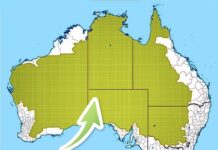6. Chinese
The latest Chinese dictionary, Zhonghua Zihai, compiled in 1994, contains – are you sitting? – 85,568 hieroglyphs. True, it would be more correct to speak not about the Chinese language, but about the Chinese branch of languages, which unites many dialects, but there are still no easy ones among them. Take at least hieroglyphs: as a consolation, we can immediately say that not all of the more than 85 thousand are actively used in the modern language: the lion’s share of them is found only in literary monuments of various Chinese dynasties and is no longer used in practice. Let’s say the character “se”, meaning “talkative”, which consists of 64 strokes. However, the current hieroglyphs are not so simple: for example, the hieroglyph “nan”, which means “stuffy nose”, is depicted with 36 dashes. Unlike happy Europeans, who learn a few dozen letters, a resident of the Celestial Empire, in order to start reading more or less, must memorize, at worst, at least 1500 hieroglyphs. But each hieroglyph also needs to be learned to draw. Oh, you are heavy, Chinese letter!

7. Finnish
Everyone who has tried to learn all fifteen Finnish cases and more than a hundred conjugations and personal forms of the verb will agree that Finnish is difficult. Finns don’t just burn their hearts with the verb – they decline the verb like a noun! Add to this the alternation of consonants, the abundance of suffixes and cryptic postpositions, verbal control that is difficult for a foreigner – and it seems just right to fall into despair. But don’t be in a hurry: there is a lot of comfort in the Finnish language for a diligent student. Words are both heard and written and read in the same way – there are no unpronounceable letters here. The stress always falls on the first syllable, and the category of gender is completely absent, which is quite capable of warming the soul of a supporter of equality. There are several past tenses in Finnish, but there is no future tense at all. Connoisseurs of the national character argue that this is because the Finns are used to being responsible for the spoken words, and if the Finn has already promised, he will definitely do it.

8. Khoisan
Some of the Khoisan languages are endangered, and many have already died out. But still, about 370 thousand people still speak these very unusual dialects. The fact is that in the languages spoken in southern Africa around the Kalahari desert, there are so-called clicks or clicking consonants. The term “Khoisan” itself was constructed from the words of the Khoisan Nama language: “Koi” in it means a person, and “San” means “Bushman”. Initially, this term was used to denote the physical-racial type of these peoples, and only much later did the American linguist Joseph Greenberg apply the term to the macrofamily of languages that use clicking sounds. Not so long ago, genetic scientists confirmed the ancient isolation of the Khoisan peoples from the rest of mankind and found that the tribes living north and south of the Kalahari have been isolated from each other for at least 30 thousand years.

9. Abkhazian
There are only three vowels in the Abkhazian language – a, y and aa. The remaining vowels, denoted in writing by separate letters – e, o, and, y, are obtained from a combination of other vowels and consonants. The Abkhazian language compensates for the vocal poverty with an abundance of consonants: there are 58 of them in the literary language, and as many as 67 in the Bzyb dialect. By the way, the Abkhazian alphabet based on the Cyrillic alphabet was created in 1862, and three years later the Abkhazian primer was released. The manner of the Abkhazians to start a word with the letter “a” has been joked many times. But this prefix, or colloquially a prefix, performs the same function in the Abkhazian language that the in English is a definite article. It is placed before all nouns, and according to the rules of the Abkhazian language, it is added to borrowed words too. So the “destruction of the air squadron” is not a joke.

10. Tuyuka
“Think before you speak,” we were often told as children. But in the Tuyuka language, which is spoken by the Indians living in the Amazon basin, they always think about what they are talking about. After all, the Tuyuka language has special verb endings that let the listener understand how the speaker knows what he is talking about. And there is no way to do without them: the language demands! So when you say something like “a woman is washing clothes”, you have to add: “I know, because I saw it myself.” Other incredible complexities of this language include from 50 to 140 classes of nouns. The Tuyuk language is agglutinative, which means that one word can mean a whole phrase. And two whole words, meaning the pronoun “we” – inclusive and exclusive.





























